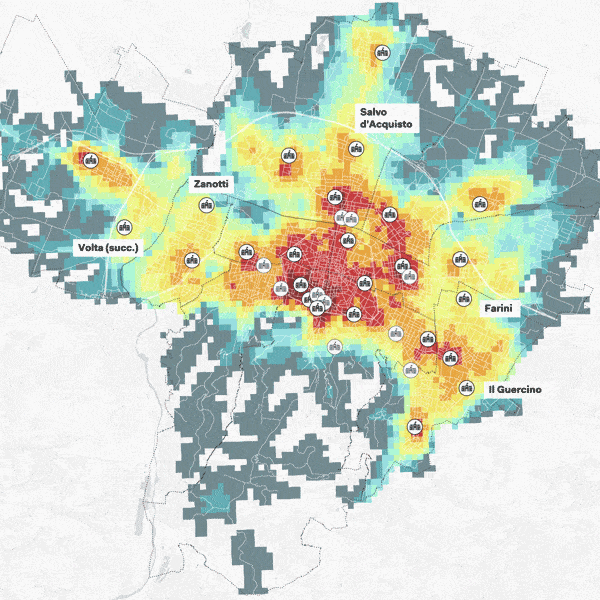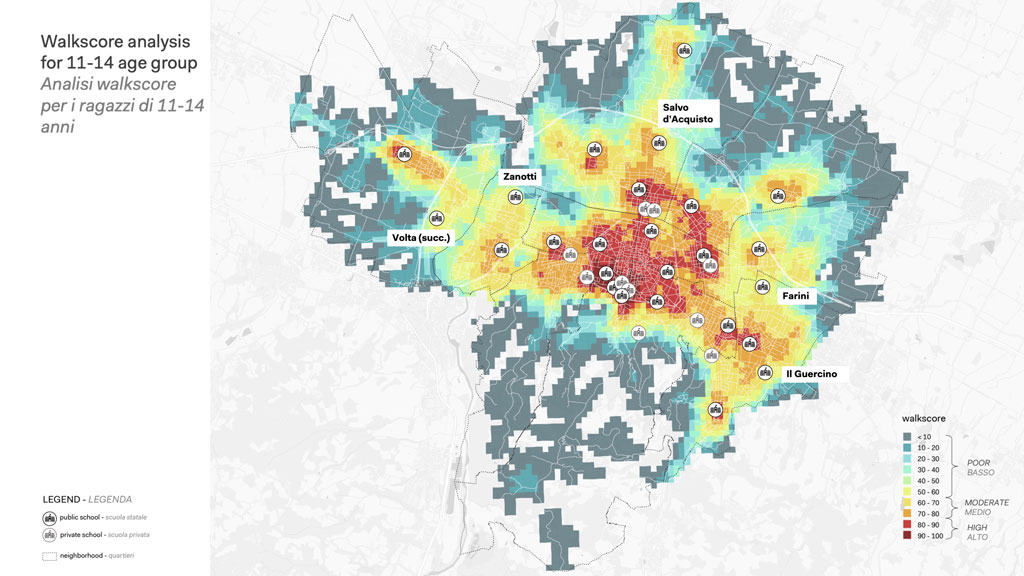On May 13th, 2021 Systematica joined a roundtable discussion at the 6th Biennale dello Spazio Pubblico – BISP 2021, the biannual event dedicated to research, activities and practices devoted to public space. Since 2011, BISP has been promoted by major Italian institutions in the field of Urban planning and Architecture including INU and CNAPPC in collaboration with several local institutions such as the Order of Architects in Rome, the Roma Tre University and others. The 6th edition “I Bambini e lo Spazio Pubblico” focused on the theme of children, traversing topics from a wide variety of issues focusing on their access and engagement in the public realm of cities. Three Italian cities in particular – Rome, Bologna and Pescara – took up the challenge to evaluate their public spaces from a child user perspective and the responsiveness of these spaces to children’s needs.

In partnership with the Bologna Municipality and Urban Center Bologna (
Foundation for Urban Innovations – FIU), Transform Transport analyzed the city’s supply of proximity services and pedestrian accessibility levels at city scale, adapted to the needs and behaviors of children in the 11-14-year-old age group. In line with the General Theory of Walkability proposed by Speck in 2013, the study focused on the first of four identified precursors to walkability (usefulness, comfort, safety and security and attractiveness), using it as the basis for assessment criteria and methods for the evaluation within the study.

Following this framework, Systematica combined advanced analytical modelling using GIS tools with data supported by the Bologna Municipality database system and open-data sources to study a broad range of proximity services and the potential to reach these services on foot across different neighborhoods in the city. The list of proximity services identified is organized into 8 categories, combined into 4 macro-categories that follow a rights-based approach consistent with the UN Universal Declaration of Human Rights. These services were further classified according to their frequency of use in children’s daily lives, giving higher weight to target users’ daily services such as schools, parks and sports facilities.

The results of the mapping analysis revealed that Bologna performs very well overall in terms of proximity of services with most districts covered by at least 4 of the 8 service categories within a 15-minute walking timeframe. Moreover, despite a more marked difference in walkability levels spatially, the Walkscore analysis showed that 77% of the population of Bologna live in areas characterized by a high walkability index. Services targeting the 11-14 age group are well distributed across the urban area although three neighborhoods can benefit from an enhancement in terms of supply of proximity services for children and walking conditions. A targeted Walkscore analysis for children was carried out considering only the services that are relevant to this age group. Some data indicates that services most relevant to children tend to be located in highly walkable areas. To take one example, superimposing schools in the city with the Walkscore analysis carried out for children reveals that about 90% of schools are already located in highly walkable areas. Levels of access for children must then consider the relative weights of different proximity services to this user group and assess supply and demand patterns according to this priority-based user-centric approach.

In order to deepen the analysis and propose suitable tactical interventions in the city, the research team intends to further investigate the walking conditions at the local scale for neighborhoods identified as low performing areas. The team also plans to investigate other key dimensions besides the utilitarian aspects of walkability (land use, network connectivity, etc.), which include comfort, safety and security and attractiveness. In order to gain a more holistic understanding of urban walkability from the viewpoint of its young users, these factors will be evaluated based on principles of child-friendly urban planning, considering the specific ways by which this particular age group engages with the urban environment and the perceived limits to their independent mobility.
For further information about the project and a complete list of references, please click or download the following report:
The results of this research activity have been included in the Annex ‘Services to People’ of the Urban Plan of the Municipality of Bologna (Piano Urbanistico Generale, 2021), available at: https://sit.comune.bologna.it/alfresco/d/d/workspace/SpacesStore/4ba03868-b2a5-4597-8433-c25115ccca1f/02_ApprofondimentiConoscitivi-c_ServiziAllePersone_APPRweb.pdf
The research has been also published in the Proceedings of the 57th ISOCARP World Planning Congress: Abdelfattah, L., Boni, G., Carnevalini, G., Choubassi, R., Gorrini, A., Messa, F., Presicce, D. (2021). A user-centric approach to the 15-minute city. Examining children’s walkability in Bologna. In: Proceedings of the 57th ISOCARP World Planning Congress 2021 (ISOCARP 2021), 8-11 November 2021, Doha (Qatar), 582-591. Available at: https://doha2021.dryfta.com/programme/discussions/sponsor-lounge/proceedings
References
Speck, J. (2013). Walkable City: How Downtown Can Save America, One Step at a Time, Macmillan, New York City.
Moreno, C., Allam, Z., Chabaud, D., Gall, C., Pratlong, F. (2021). Introducing the “15-Minute City”: Sustainability, Resilience and Place Identity in Future Post-Pandemic Cities. Smart Cities, 4, 93–111. https://doi.org/10.3390/smartcities4010006


